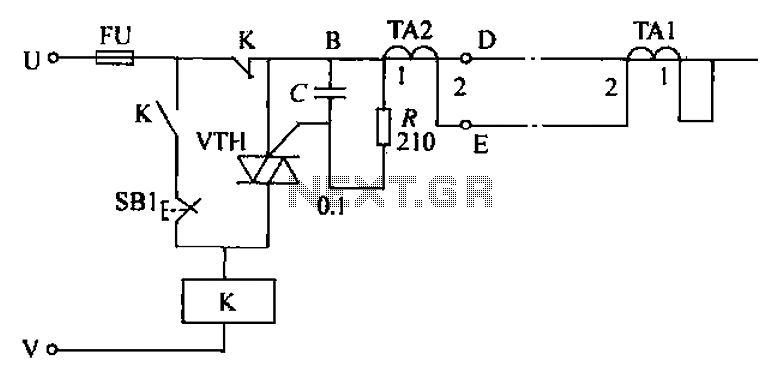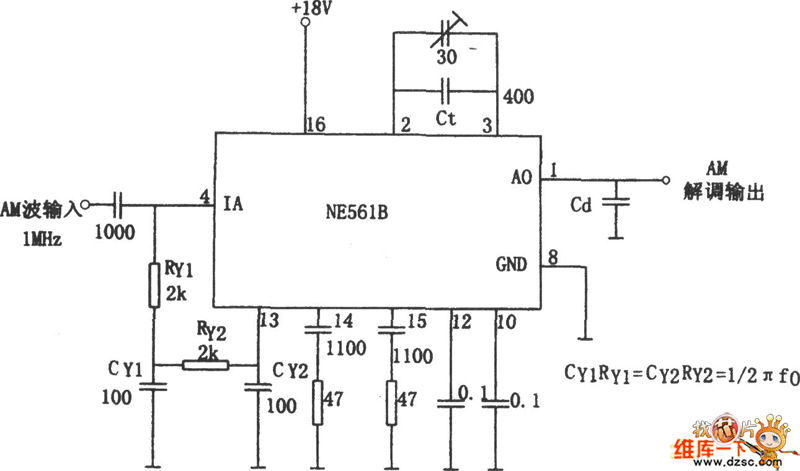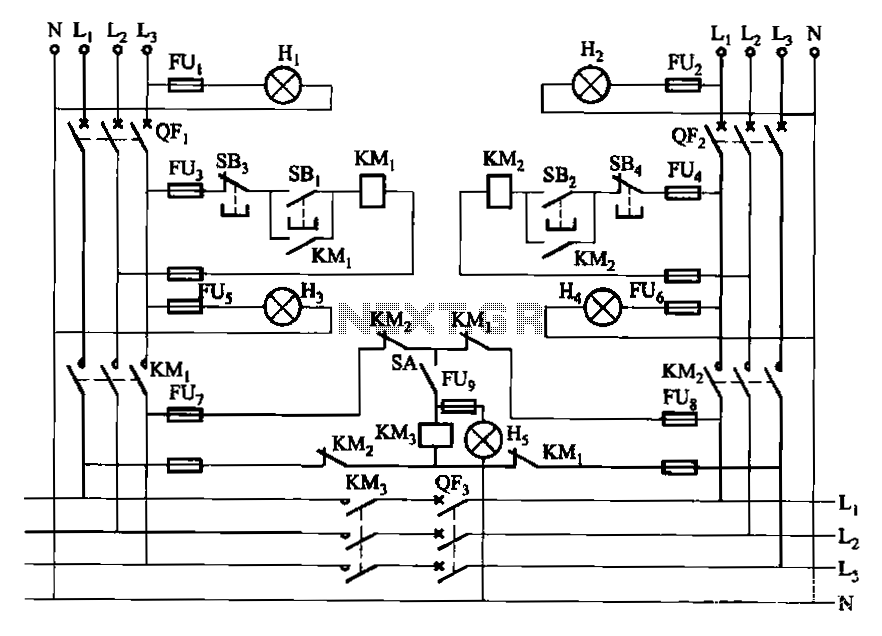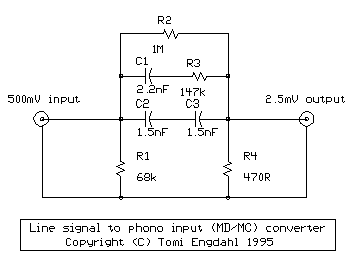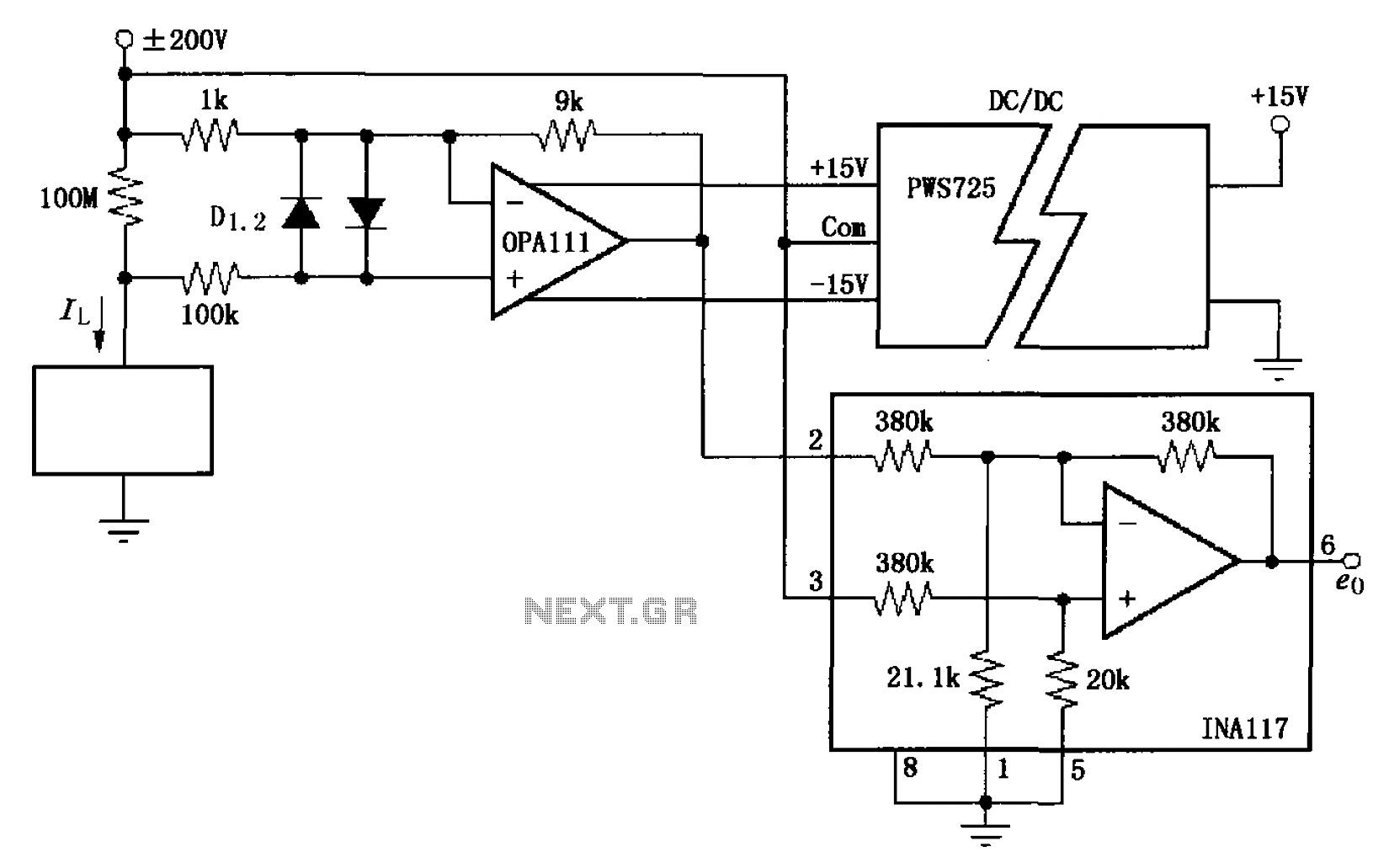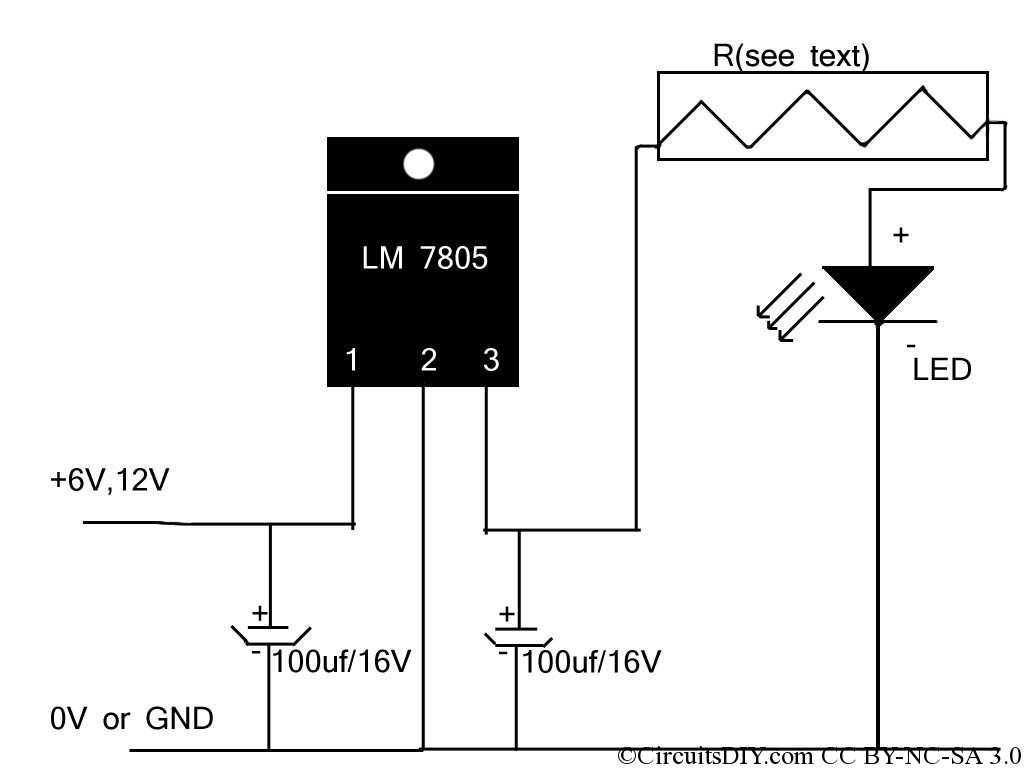
Input pulse width controller circuit
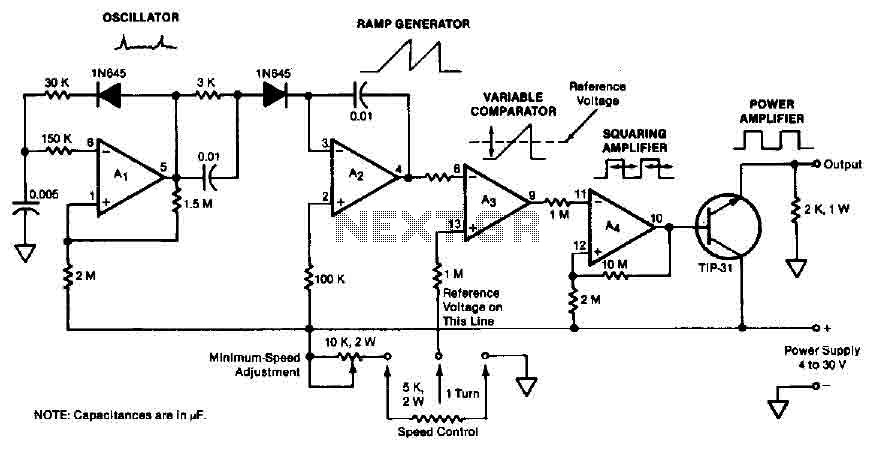
The quad operational amplifier circuit provides a pulse width modulation control ranging from 0 to 100 percent. The controller utilizes an LM3900 and operates with a single supply voltage between 4 to 30 V. A 1 kHz oscillator amplifier, which integrates AI, sets the pulse repetition frequency. This oscillator feeds into an Az ramp generator that produces a linear ramp voltage for each pulse. The ramp signal is applied to the inverting input of comparator A3, while the control voltage is connected to the non-inverting input. Consequently, the output of the comparator generates a 1 kHz pulse train, with the pulse width varying linearly according to the control voltage. The control voltage can be supplied through an adjustable potentiometer or an external feedback source, such as an engine speed detection circuit. Depending on the control voltage setting, the pulse duration can be adjusted from zero (resulting in no average DC voltage applied to the motor) to the full repetition period of the pulses (where the voltage applied to the motor equals the DC power supply voltage). An amplifier stage (A4) with a gain of 10 functions as a pulse squaring circuit. A TIP-31 medium-power transistor is driven by A4, serving as a dedicated power amplification stage.
The described quad operational amplifier circuit serves as an efficient pulse width modulation controller, leveraging the LM3900 operational amplifier to achieve precise control of motor speed or other applications requiring variable power delivery. The single supply voltage range of 4 to 30 V allows for versatile integration across various electronic systems. The core of the circuit is the 1 kHz oscillator amplifier, which serves to generate a stable frequency for the pulse width modulation.
The Az ramp generator plays a crucial role in producing a linear voltage ramp, which is essential for generating the desired pulse width. By applying this ramp signal to the inverting input of comparator A3, the circuit can effectively compare the ramp voltage with the control voltage. The comparator's output produces a pulse train whose width is modulated in accordance with the control voltage. This feature enables the circuit to adapt to different operational requirements, such as varying motor speeds based on external conditions or user input.
The adjustable potentiometer or external feedback source can be integrated into the circuit to provide dynamic control over the pulse width. This adaptability allows for real-time adjustments, making the circuit suitable for applications such as motor speed control in automotive systems or other machinery where speed regulation is critical.
The amplifier stage A4, with its gain of 10, functions as a pulse squaring circuit, ensuring that the output pulse train is sharp and well-defined, which is vital for driving the subsequent TIP-31 transistor. This medium-power transistor acts as a power amplifier, capable of handling significant current loads while providing efficient power delivery to the motor or other connected loads. The overall design of the circuit emphasizes reliability and performance, making it a valuable component in various electronic control systems.The quad operational amplifier circuit yields full 0 to 100 percent pulse width control. The controller uses an LM3900 requires only a single supply voltage of 4-30 V. The pulse repetition frequency is set by a 1 kHz oscillator amplifier that integrates AI. The oscillator feeds the Az ramp generator, which generates a linear ramp voltage for each pulse oscillator. The ramp signal feeds the inverting input of comparator A3, the control voltage feeds speed non-inverting input.
Thus, the output of the comparator is a 1 kHz pulse train, pulse width that changes linearly with control voltage. The control voltage may be provided by a _ adjustable potentiometer or an external source of feedback as an engine speed detection circuit. Depending on the setting of control voltage, the pulse duration can be set at a value between zero (zero average dc voltage applied to the motor) to full repetition period of pulses (voltage applied to the motor equal to voltage DC power supply).
An amplifier stage (A4) with a gain of 10 acts as a pulse squaring circuit. TIP-31 medium-power transistor is driven by the A4 and serves as a distinct stage of power amplifier. 🔗 External reference
The described quad operational amplifier circuit serves as an efficient pulse width modulation controller, leveraging the LM3900 operational amplifier to achieve precise control of motor speed or other applications requiring variable power delivery. The single supply voltage range of 4 to 30 V allows for versatile integration across various electronic systems. The core of the circuit is the 1 kHz oscillator amplifier, which serves to generate a stable frequency for the pulse width modulation.
The Az ramp generator plays a crucial role in producing a linear voltage ramp, which is essential for generating the desired pulse width. By applying this ramp signal to the inverting input of comparator A3, the circuit can effectively compare the ramp voltage with the control voltage. The comparator's output produces a pulse train whose width is modulated in accordance with the control voltage. This feature enables the circuit to adapt to different operational requirements, such as varying motor speeds based on external conditions or user input.
The adjustable potentiometer or external feedback source can be integrated into the circuit to provide dynamic control over the pulse width. This adaptability allows for real-time adjustments, making the circuit suitable for applications such as motor speed control in automotive systems or other machinery where speed regulation is critical.
The amplifier stage A4, with its gain of 10, functions as a pulse squaring circuit, ensuring that the output pulse train is sharp and well-defined, which is vital for driving the subsequent TIP-31 transistor. This medium-power transistor acts as a power amplifier, capable of handling significant current loads while providing efficient power delivery to the motor or other connected loads. The overall design of the circuit emphasizes reliability and performance, making it a valuable component in various electronic control systems.The quad operational amplifier circuit yields full 0 to 100 percent pulse width control. The controller uses an LM3900 requires only a single supply voltage of 4-30 V. The pulse repetition frequency is set by a 1 kHz oscillator amplifier that integrates AI. The oscillator feeds the Az ramp generator, which generates a linear ramp voltage for each pulse oscillator. The ramp signal feeds the inverting input of comparator A3, the control voltage feeds speed non-inverting input.
Thus, the output of the comparator is a 1 kHz pulse train, pulse width that changes linearly with control voltage. The control voltage may be provided by a _ adjustable potentiometer or an external source of feedback as an engine speed detection circuit. Depending on the setting of control voltage, the pulse duration can be set at a value between zero (zero average dc voltage applied to the motor) to full repetition period of pulses (voltage applied to the motor equal to voltage DC power supply).
An amplifier stage (A4) with a gain of 10 acts as a pulse squaring circuit. TIP-31 medium-power transistor is driven by the A4 and serves as a distinct stage of power amplifier. 🔗 External reference
Warning: include(partials/cookie-banner.php): Failed to open stream: Permission denied in /var/www/html/nextgr/view-circuit.php on line 713
Warning: include(): Failed opening 'partials/cookie-banner.php' for inclusion (include_path='.:/usr/share/php') in /var/www/html/nextgr/view-circuit.php on line 713
